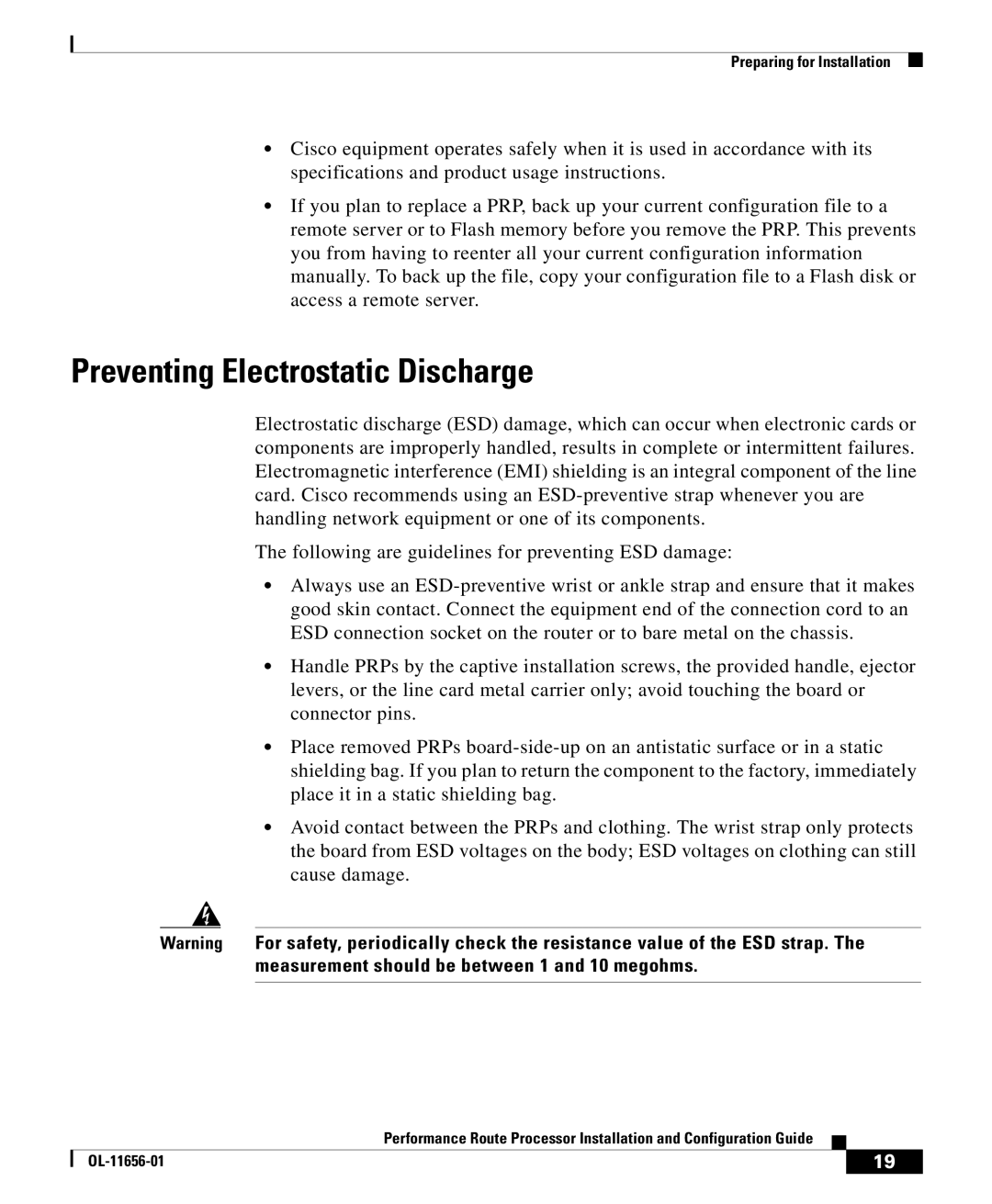
Preparing for Installation
•Cisco equipment operates safely when it is used in accordance with its specifications and product usage instructions.
•If you plan to replace a PRP, back up your current configuration file to a remote server or to Flash memory before you remove the PRP. This prevents you from having to reenter all your current configuration information manually. To back up the file, copy your configuration file to a Flash disk or access a remote server.
Preventing Electrostatic Discharge
Electrostatic discharge (ESD) damage, which can occur when electronic cards or components are improperly handled, results in complete or intermittent failures. Electromagnetic interference (EMI) shielding is an integral component of the line card. Cisco recommends using an
The following are guidelines for preventing ESD damage:
•Always use an
•Handle PRPs by the captive installation screws, the provided handle, ejector levers, or the line card metal carrier only; avoid touching the board or connector pins.
•Place removed PRPs
•Avoid contact between the PRPs and clothing. The wrist strap only protects the board from ESD voltages on the body; ESD voltages on clothing can still cause damage.
Warning For safety, periodically check the resistance value of the ESD strap. The measurement should be between 1 and 10 megohms.
|
| Performance Route Processor Installation and Configuration Guide |
|
|
|
|
| ||
|
|
| 19 | |
|
|
|
